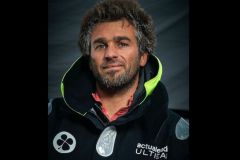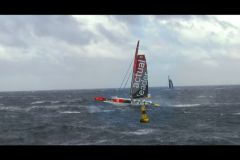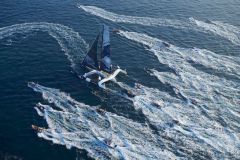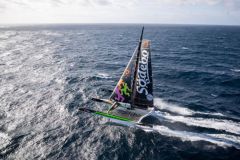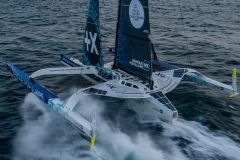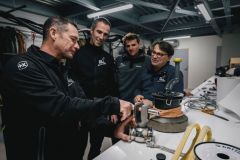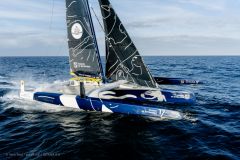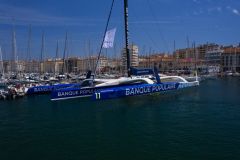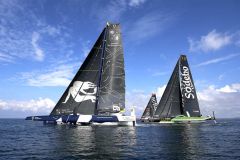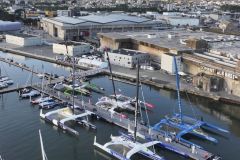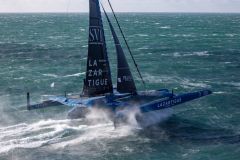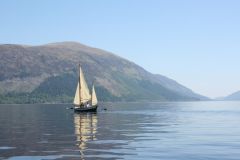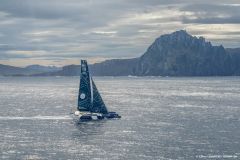A rather innovative route between the North and South Atlantic
The Atlantic Brest is a new race reserved for the Ultimates with a course of more than 10?000 miles between Brest, Brazil and Cape Town and Brest. This road traces a rather innovative loop between the two Atlantic Ocean, north and south, as Jacques Caraës, the race director, explains to us.
"Brest Atlantic offers a rather innovative route of 14?000 nautical between the North Atlantic and the South Atlantic, non-stop, with 2 important passage marks. The first - Ilhas Cagarras - is located 2 miles (4 km) from Ipanema beach in Rio de Janeiro and must be left to port. The sailors will then have to bypass the St. Helena high to reach the 2 e mark, materialized by the island of Robben Island, in front of Cape Town which they will have to bypass by leaving it to port before going up to Brest."
This 30-day sea course is played in pairs on these 32 m by 23 m trimarans, which are constantly being optimised to improve performance and safety.
"It's an ambitious long journey, on recent boats, reopened and reinforced since the Route du Rhum 2018, with a crew of two and a mediaman."
Indeed, on board each of the four boats is embarked a mediaman, in charge of telling the story of the race.
"The latter does not participate in the race from a sporting point of view and can only film, photograph or write. We are asking for a declaration on the honour of the three parties. They should contact the race director, who will in turn inform the jury of the mediaman's assistance if necessary."

Yvan Zedda
An interesting "meteorological" journey
"Meteorologically speaking, it's an interesting route. It's interesting to launch Ultimates on such a long journey."
Because with high average speeds, participants could discover new "roads" across the Atlantic.
"These are new mounts with very high speeds at certain wind angles and axes. It is therefore possible that the strategies of these boats will lead us to discover new passages, other boats, such as IMOCAs, will not use them. For the return, for example, we can expect to find lifts closer to Africa than we usually see."
Technical stopovers exclusively
This course must be non-stop, but in view of the technical nature of the boats, the organisation has authorised "only technical stops, which will not be penalized in time."
The race management must validate each technical stopover and give the green light to the crews by indicating the place where the boat will have to reach.
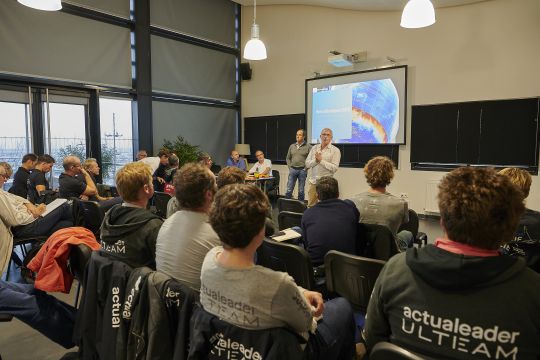
Yvan Zedda
Strategic passages
"The first strategic passage will be the engagement of the first ten to twelve hours of sailing even if the downwind conditions are interesting for speed. We're going to have to balance it out, because the beam sea is very aggressive. The skippers will have to cross the Bay of Biscay in "degraded mode", i. e. about 60% of the polar regions."
The conditions for hanging on to the trade wind will be perfect and we shouldn't miss the train. But the road is long and many sensitive passages await the duets. "Once they hit the trade wind, they'll head for Rio with a strong wind. They will first have to pass the Doldrums, where the skilful placement in more or less western longitude will allow them to pass as well as possible. They will then continue along the islands and may be slowed down in Rio Bay, which may have a tightening effect. Finally, they will bypass the St. Helena High from the south, with an important strategy."
Because, depending on the positioning of Saint-Hélène, the fleet will be very close to the iceberg's upwelling. To protect the boats and its skippers, Jacques Caraës has set up a limit called ZEG (Zone Exclusive des Glaces) which prohibits sailors from descending below 40° south (Editor's note: The Roaring Fortyth), materialised by the island of Gough (Gough Island), which they must leave on starboard.
"West of Gough Island, they will be able to sail to 40° south and east of the island, they will have the opportunity to go to 43° south."
A beginning of a journey similar to that of a round the world trip
It was a collective choice of skippers, shipowners and race organisers that motivated the creation of the course. And if it has been retained, it is because the beginning is similar to that of a round the world trip.
"This course is a good fit, because these boats will sail around the world either with a crew - as Thomas Coville announced - or solo - which is on the programme of the Ultimate Series. And in a round-the-world trip, this route to the South Atlantic is the same: same period and same style of descent on the Equator."
While at the beginning there was a debate about the meaning of this course - first Cape Town and then Rio - the race director preferred a course starting in Brazil and going through Africa. "It is more suitable for round the world travel than in the future, some will do."




